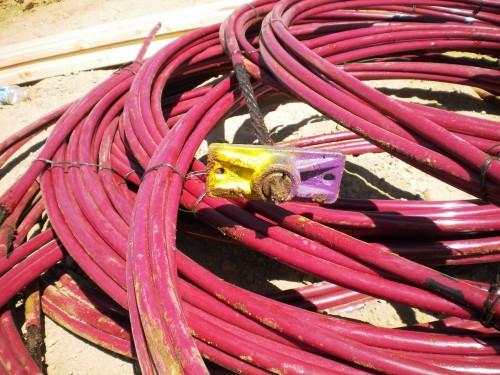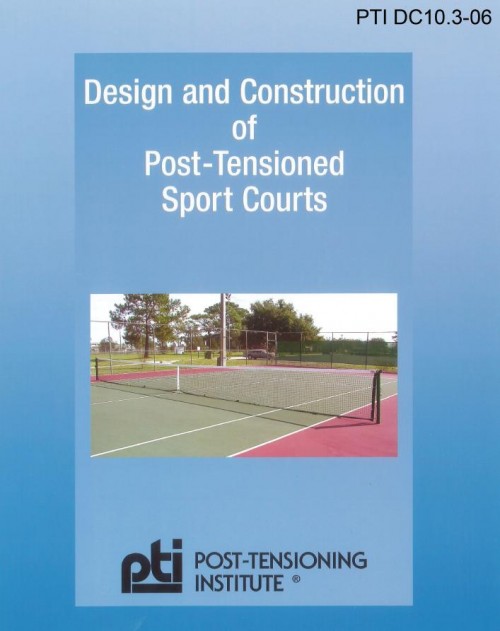Why use a post tensioned slab-on-grade for your sport courts?
Performance and long term total cost.
A post tensioned concrete slab on grade requires little maintenance compared to a asphalt or mildly reinforced concrete slab. In addition, post tensioned slabs do not require control joints in the slab, giving the players a smooth surface over the entire court. Many asphalt and mildly reinforced courts begin to have cracks and noticeable movement with in 5 years of construction. These slabs require expensive maintenance and become an eyesore.
The reason post tensioned slabs outperform other methods is because concrete performs well under compressive forces, but fails under low tensile forces. By adding compressive forces into the concrete with steel cables the slab becomes stronger and able to resist soil movements where other methods would otherwise fail. A simple way to image this concept is placing 4 small wood blocks in a row. Then place a rubber band around the wood blocks. The 4 small blocks are now held together and act as one block.
Using the same example of 4 small wood blocks, an asphalt court would be holding the blocks together with rubber cement and a mildly reinforced concrete slab would be holding the blocks together with a string glued through small holes in the middle. Although the blocks are held together you can still imagine you could bend or pull the blocks apart easier than the 4 blocks with a rubber band.
To achieve sufficient performance a minimum residual compressive force of 100psi is used. This is the rubber band force mentioned above, but much greater. The 100psi force is typically achieved by spacing steel tendons 30″ to 36″ on center and stressed to 33,000lbs.
For more information refer to the PTI Design and Construction of Post Tensioned Sport Courts.












